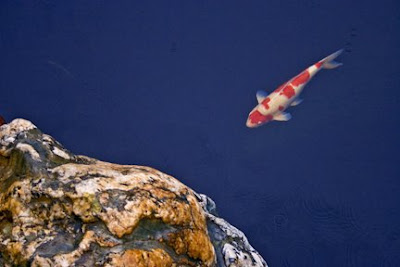…since we’re on the topic of Development!

What happens when well meaning aid and development ‘experts’ find a hungry man?
Bought this gem of illustrations from the author years ago in Cambodia. It’s a riot read for anyone in the field (and managers sitting in headquarters). Available online here.
.
An old poem on Development
The Development Set
by Ross Coggins
Excuse me, friends, I must catch my jet
I’m off to join the Development Set;
My bags are packed, and I’ve had all my shots
I have traveller’s checks and pills for the trots!
The Development Set is bright and noble
Our thoughts are deep and our vision global;
Although we move with the better classes
Our thoughts are always with the masses.
In Sheraton Hotels in scattered nations
We damn multi-national corporations;
injustice seems easy to protest
In such seething hotbeds of social rest.
We discuss malnutrition over steaks
And plan hunger talks during coffee breaks.
Whether Asian floods or African drought,
We face each issue with open mouth.
We bring in consultants whose circumlocution
Raises difficulties for every solution –
Thus guaranteeing continued good eating
By showing the need for another meeting.
The language of the Development Set
Stretches the English alphabet;
We use swell words like “epigenetic”
“Micro”, “macro”, and “logarithmetic”
It pleasures us to be esoteric –
It’s so intellectually atmospheric!
And although establishments may be unmoved,
Our vocabularies are much improved.
When the talk gets deep and you’re feeling numb,
You can keep your shame to a minimum:
To show that you, too, are intelligent
Smugly ask, “Is it really development?”
Or say, “That’s fine in practice, but don’t you see:
It doesn’t work out in theory!”
A few may find this incomprehensible,
But most will admire you as deep and sensible.
Development set homes are extremely chic,
Full of carvings, curios, and draped with batik.
Eye-level photographs subtly assure
That your host is at home with the great and the poor.
Enough of these verses – on with the mission!
Our task is as broad as the human condition!
Just pray god the biblical promise is true:
The poor ye shall always have with you.
.
Foreign aid in economic crises…
In an interview with CNN’s Wolf Blitzer, Bill Gates called for a doubling of foreign aid commitment. Even though historically, economic crises tend to suppress aid packages, I couldn’t agree more that maintaining and increasing aid is in the US’ strategic interests.
No, I’m not affiliated with USAID. Not surprisingly, Germany increased aid– knock on wood– …
When this administration blundered into war it soon became apparent that our goal isn’t finding and killing the enemy. It’s about rehabilitating zones of chaos where dangerous ideologies grow and breed. The world’s path to progress and stability is increasingly threatened by alarming headlines of terrorist nature, troubling in the fact that their roots lie in failing or failed states, which are numerous and growing in number.
In the fight against terrorism, it is not about crusading for democracy and regime change in a handful of countries. We need soft diplomacy: nation-building and developing government capacity in the world’s poorest economies, difficult when the lines between security and development are no longer so clear-cut. Aid can be an effective way to export value systems (since Hollywood exports no longer work) and elicit goodwill (since we squandered that with our 2003 invasion of Iraq), and equity negotiation is one of the least common denominators to maintaining stability in American suburbia.
An aside: With aid diplomacy so crucial to foreign policy strategy, it’s a wonder that aid approaches have little changed since its inception at Bretton Woods….? But I digress, that’s another post.
Starting in 2006 Secretary of State Condoleezza Rice and Defense Secretary Robert Gates both started calling for a transformational diplomacy, delivering speeches that finally resonate with logic: “…the lines separating war, peace, diplomacy and development have become more blurred and no longer fit the neat organizational charts of the 20th century.”
Rice and Gates jump-started this dialogue about using federal agencies to empower people to install good governance in troubled spots around the world. And Obama thankfully embraced their language. Both Hillary Clinton and James Jones are advocates of this strategy, suggesting that cooperation is possible between the Pentagon, the National Security Council and the State Department.
If this strategy is put into action, it’s a welcome continuity from this administration.
Hong Kong harbor at night









—————- and in the daytime, other things memorable about Hong Kong:
 We didn’t spend too long there to really get a feel for the city. We had consistently dramatic sky/lines at sunset, courtesy of the ever-present smog. It’s a great shopping destination, and has a vibrant culture and arts scene. What’s visually distinctive about HK is the immense billboards advertising anything and everything–EVERYwhere. Even on the harbor, the skyline’s marred by monstrous advertising signs on buildings. Back home it’s like something’s lost when a stadium was
We didn’t spend too long there to really get a feel for the city. We had consistently dramatic sky/lines at sunset, courtesy of the ever-present smog. It’s a great shopping destination, and has a vibrant culture and arts scene. What’s visually distinctive about HK is the immense billboards advertising anything and everything–EVERYwhere. Even on the harbor, the skyline’s marred by monstrous advertising signs on buildings. Back home it’s like something’s lost when a stadium was
But I love the food, and the gamut is available here for any price range. We ordered blind usually, having absolutely no idea what anything was and unable to communicate with the super friendly waitstaff beyond hand gesturing about something swimming (meaning fish) or flapping arms (meaning duck or chicken. we think.). Tastes here were a little on the intense side– not heat so much as strong spices.



 The bird park is an early morning curiosity. The tiniest, most fragile little cages with colorful bright birds get walked by their male owners (no women were walking their birds) for a little bit of fresh air. It’s an interesting sight –so many people with their cages of small animals, comparing and showing off their creatures.
The bird park is an early morning curiosity. The tiniest, most fragile little cages with colorful bright birds get walked by their male owners (no women were walking their birds) for a little bit of fresh air. It’s an interesting sight –so many people with their cages of small animals, comparing and showing off their creatures.
 And this was just a cool photo of a koi(?) in one of the restaurants’ ponds.
And this was just a cool photo of a koi(?) in one of the restaurants’ ponds.

Kuala Lumpur: Culinary destination!
 KL is one of my favorite places to pass through. As in most Asian countries, legislation aims to protect the dominant native population against immigrant ethnic influence, sometimes to disastrous effects, and constantly keeping its politics on edge. This charged convergence of ethnic and religious mixes (it was my best introduction to the rich history and diversity of Islam) is what–to me, as a tourist–makes Malaysia such a fascinating destination.
KL is one of my favorite places to pass through. As in most Asian countries, legislation aims to protect the dominant native population against immigrant ethnic influence, sometimes to disastrous effects, and constantly keeping its politics on edge. This charged convergence of ethnic and religious mixes (it was my best introduction to the rich history and diversity of Islam) is what–to me, as a tourist–makes Malaysia such a fascinating destination.
And this is where I have always the best food experience! This time we had a true foodie take us around. Malaysia is a premiere culinary destination in SE Asia, and boasts a confluence of truly powerful taste sensations, blending many ethnic influences: Indo-, Malay-, and Chinese. Many thanks to Honey Ahmad, of the acclaimed food network Fried Chillies!
First some bahasa 101 (applies also in Indonesia):
Rice- Nasi
Fried- Goreng
Squid- Sotong
Fish- Ikan
Grilled- Bakar
Chicken- Ayam
Meat- (Daging- we usually use daging for beef as well)
Mutton- Kambing
Bread- Roti
Red- Merah
Black- Hitam
 This is Indian cooking, usually places like this are called ‘mamak’ which
This is Indian cooking, usually places like this are called ‘mamak’ which
means Indian Muslim because they usually have corner 24-hour eating places that serve the usual curries, rice, roti etc. This particular dish is sotong goreng with some fried cabbage (kobis). Mutton curry is very common.
 This is an Indian/ Mamak eatery, where the dishes are set out behind a glass counter. In the Philippines we call it a turo-turo (point-point, because you point at the dishes you want). Fish curry, ayam masak merah (chicken in red sauce/ tomato), and a squid curry and chicken in black sauce (ayam hitam).
This is an Indian/ Mamak eatery, where the dishes are set out behind a glass counter. In the Philippines we call it a turo-turo (point-point, because you point at the dishes you want). Fish curry, ayam masak merah (chicken in red sauce/ tomato), and a squid curry and chicken in black sauce (ayam hitam).
 Grilled stingray (pari bakar). A usual grilled fish place will be called ikan bakar. That sauce which comes with it is usually chillies, soya sauce and tamarind juice (a variation of these basic ingredients). We call it air assam (sour water is the literal translation).
Grilled stingray (pari bakar). A usual grilled fish place will be called ikan bakar. That sauce which comes with it is usually chillies, soya sauce and tamarind juice (a variation of these basic ingredients). We call it air assam (sour water is the literal translation).
Another meal that we had was Nasi Kandar (rice and curries and fried stuff). It’s usually the domain of Indian Muslims. Kandar means ‘to carry’ usually with the shoulder. IN the old days Nasi Kandar sellers will carry a long pole with rice and drinks on one side and dishes balancing it on the other side. A noodle dish they have is Mee Rebus.
What I don’t have a picture of and wish I did: The small dishes of chili that come with long beans and cucumbers, called sambal belacan (made of pounded chilies, fermented prawn paste– belacan, and a squeeze of lime). This is a condiment Malays eat with everything and make all sorts of variation from, eg sambal belacan with fermented durians or mangos etc…
 If you can get past the requisite brightly-colored plastic tableware, there’s a lot to discover about Malaysian cuisine!
If you can get past the requisite brightly-colored plastic tableware, there’s a lot to discover about Malaysian cuisine!
